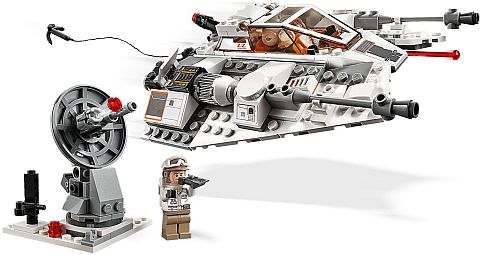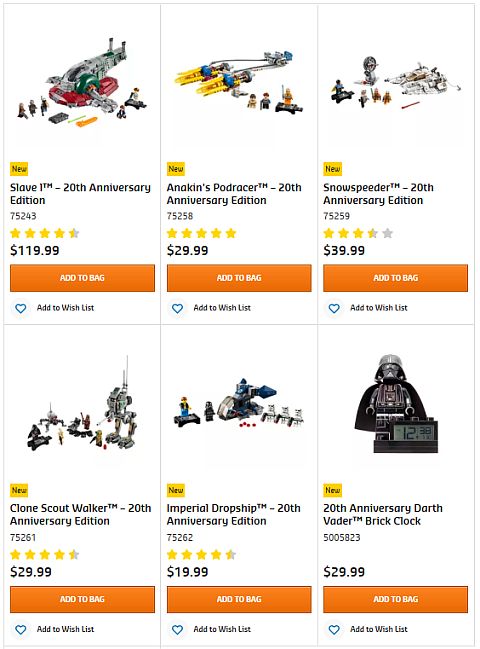Just wanted to bring to your attention that although the Star Wars Day specials that ran at the beginning of the month are over, there are a couple of LEGO Star Wars sets still offered with Double VIP Points. The two sets are the #75242 LEGO Star Wars Black Ace TIE Interceptor, and the #75259 LEGO Star Wars 20th Anniversary Edition Snowspeeder – both recently released LEGO Star Wars sets. They are available with Double VIP Points until the end of the month.


The #75242 LEGO Star Wars Black Ace TIE Interceptor is from the Star Wars Resistance TV show. It features an opening cockpit to sit ace pilot Griff Halloran, two spring-loaded shooters on the wingtips, and a removable panel at the back to store a spare missile. The included minifigs are Griff Halloran and Poe Dameron, plus there is also a BB-8 droid. The TIE Interceptor measures over 3” (8cm) high, 14” (36cm) long and 8” (21cm) wide. 396 pieces. Price: $49.99 – BUY HERE

The #75259 LEGO Star Wars 20th Anniversary Edition Snowspeeder is one of the recently released 20th anniversary sets. It is an updated version of the original #7130 LEGO Star Wars Snowspeeder model released in 1999, and features an opening cockpit with space for the Luke Skywalker and Dak Ralter in pilot suits, laser cannons, a spring-loaded shooter under each wing, plus a stud shooter and harpoon with string at the rear. There is also an elevating and rotating gun tower with stud-shooter for epic Battle of Hoth action from Star Wars: The Empire Strikes Back, plus a bonus Lando Calrissian minifigure from 2003 on a 20th anniversary display stand. The four minifigs are Luke Skywalker and Dak Ralter in their pilot outfits, a Rebel Trooper, and a bonus anniversary Lando Calrissian. The LEGO Star Wars 20th anniversary minifigure display stand can connect to the other display stands in the 20th anniversary collection. The Snowspeeder model measures over 1” (5cm) high, 7” (18cm) long and 5” (14cm) wide, and the gun tower measures over 3” (8cm) high, 2” (6cm) wide and 2” (6cm) deep. 309 pieces. Price: $39.99 – BUY HERE

The other 20th anniversary sets include the #75243 LEGO Star Wars 20th Anniversary Slave I, the #75258 LEGO Star Wars 20th Anniversary Anakin’s Podracer, the #75261 LEGO Star Wars 20th Anniversary Clone Scout Walker, and the #75262 LEGO Star Wars 20th Anniversary Imperial Dropship. We have talked about the sets in detail here, and if you want to check them out, they are available at the LEGO Star Wars section of the Online LEGO Shop.


Also, don’t forget about the newly released #75244 LEGO Star Wars Tantive IV! Although the Double VIP Points period for this set is now over, it is still the newest large LEGO Star Wars set, with an updated version of the #10198 LEGO Star Wars Tantive IV from 2009. You can learn more about the set via the links at the end of this post, and purchase it at the LEGO Star Wars section of the Online LEGO Shop.

What do you think? How do you like the LEGO Star Wars 20th anniversary sets and the other recently released LEGO Star Wars sets? Do you have any of them already? Which one is your favorite? Feel free to share your thoughts and discuss in the comment section below!
And you might also like to check out the following related posts:















